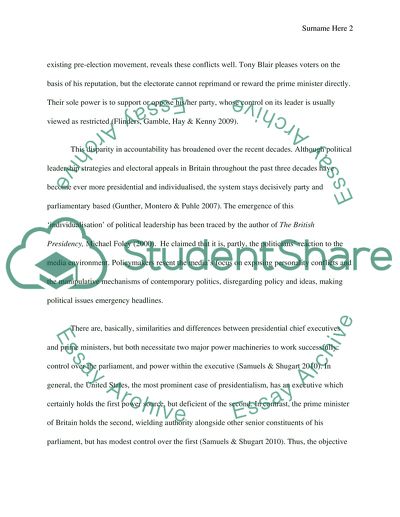Cite this document
(“Prime Ministers can never behave like Presidents. Therefore, the Essay - 1”, n.d.)
Prime Ministers can never behave like Presidents. Therefore, the Essay - 1. Retrieved from https://studentshare.org/miscellaneous/1575693-prime-ministers-can-never-behave-like-presidents-therefore-the-presidentialisation-of-parliamentary-democracies-thesis-is-misguided-discuss
Prime Ministers can never behave like Presidents. Therefore, the Essay - 1. Retrieved from https://studentshare.org/miscellaneous/1575693-prime-ministers-can-never-behave-like-presidents-therefore-the-presidentialisation-of-parliamentary-democracies-thesis-is-misguided-discuss
(Prime Ministers Can Never Behave Like Presidents. Therefore, the Essay - 1)
Prime Ministers Can Never Behave Like Presidents. Therefore, the Essay - 1. https://studentshare.org/miscellaneous/1575693-prime-ministers-can-never-behave-like-presidents-therefore-the-presidentialisation-of-parliamentary-democracies-thesis-is-misguided-discuss.
Prime Ministers Can Never Behave Like Presidents. Therefore, the Essay - 1. https://studentshare.org/miscellaneous/1575693-prime-ministers-can-never-behave-like-presidents-therefore-the-presidentialisation-of-parliamentary-democracies-thesis-is-misguided-discuss.
“Prime Ministers Can Never Behave Like Presidents. Therefore, the Essay - 1”, n.d. https://studentshare.org/miscellaneous/1575693-prime-ministers-can-never-behave-like-presidents-therefore-the-presidentialisation-of-parliamentary-democracies-thesis-is-misguided-discuss.


